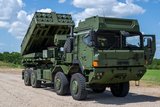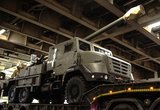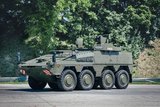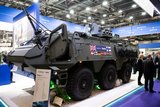The Lego Principle: Falcon Shield, RiwP and the growth of modularity in land defence
A Moog RIwP turret in its UK configuration. (Photo: Moog, Inc.)
There was a time when every land vehicle, every weapon, every sensor was a thing unto itself, often requiring a different part of the same supply chain, or even an entirely different strand of supply altogether. That led to a situation in land defence where supply chains were diffuse and rarely well used, because the likelihood of needing certain bells or particular whistles was often not enough to justify the expenditure of buying them.
Increasingly, however, that time is disappearing. The rise of modularity lets defence units fit as many, or as few, elements of a system together as they
Already have an account? Log in
Want to keep reading this article?
More from Land Warfare
-
![Lockheed Martin to look further afield for GMARS rocket system opportunities]()
Lockheed Martin to look further afield for GMARS rocket system opportunities
The HX truck is already in use in many NATO and allied countries around the world as a logistics vehicle and carrier for high-value systems, including missile firing weapons, so its use for the Global Mobile Artillery Rocket System makes logistical sense.
-
![Lithuanian 1st Division to achieve initial operating capability in 2026]()
Lithuanian 1st Division to achieve initial operating capability in 2026
Lithuania is one of the countries stepping up its defences in the face of the war in Ukraine with a particular focus on its neighbour and Russian ally Belarus, which has been making incursions into Lithuania’s airspace with balloons and drones.
-
![Beyond Survivability: How Active Protection Systems Are Empowering Commanders (Podcast)]()
Beyond Survivability: How Active Protection Systems Are Empowering Commanders (Podcast)
As threats diversify and intensify, APS are proving essential not just for vehicle protection but also for enhancing operational freedom, effectiveness and mission success in contested environments.
-
Medium knocked out of British Army LMP, with CAVS as heavyweight champion
As the British Army seeks to modernise and consolidate its diverse vehicle fleet, yet another change in direction is underway.























